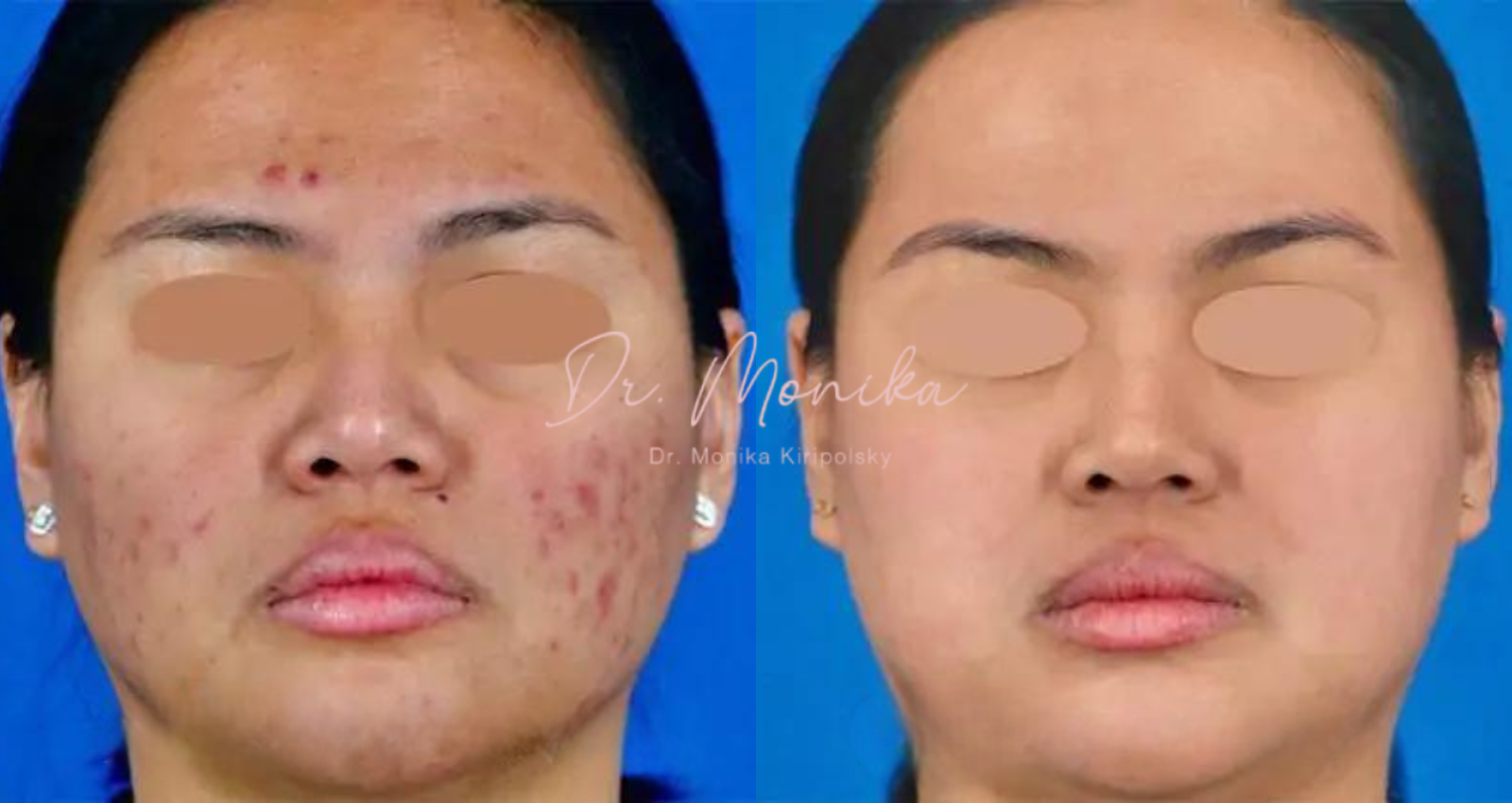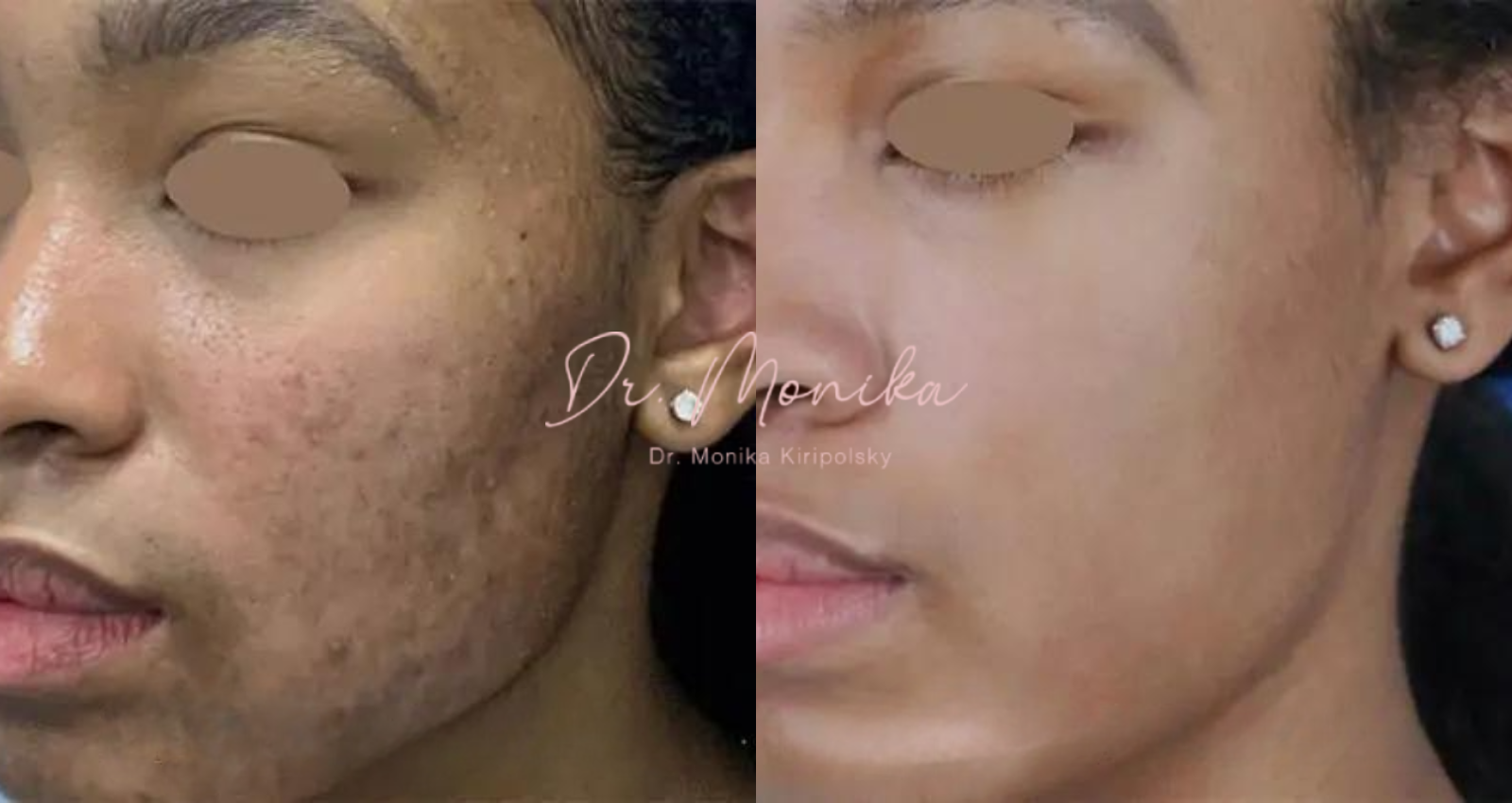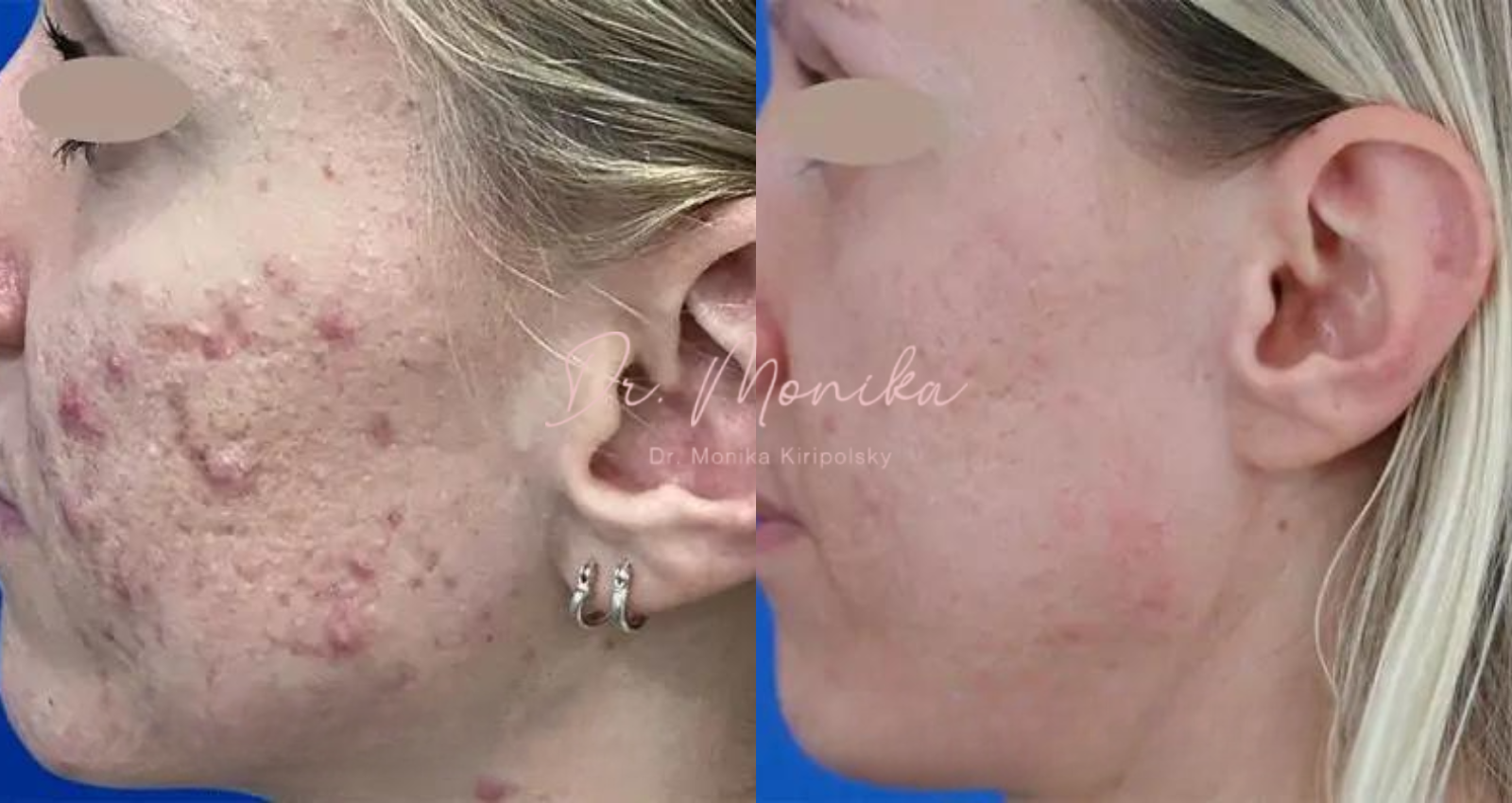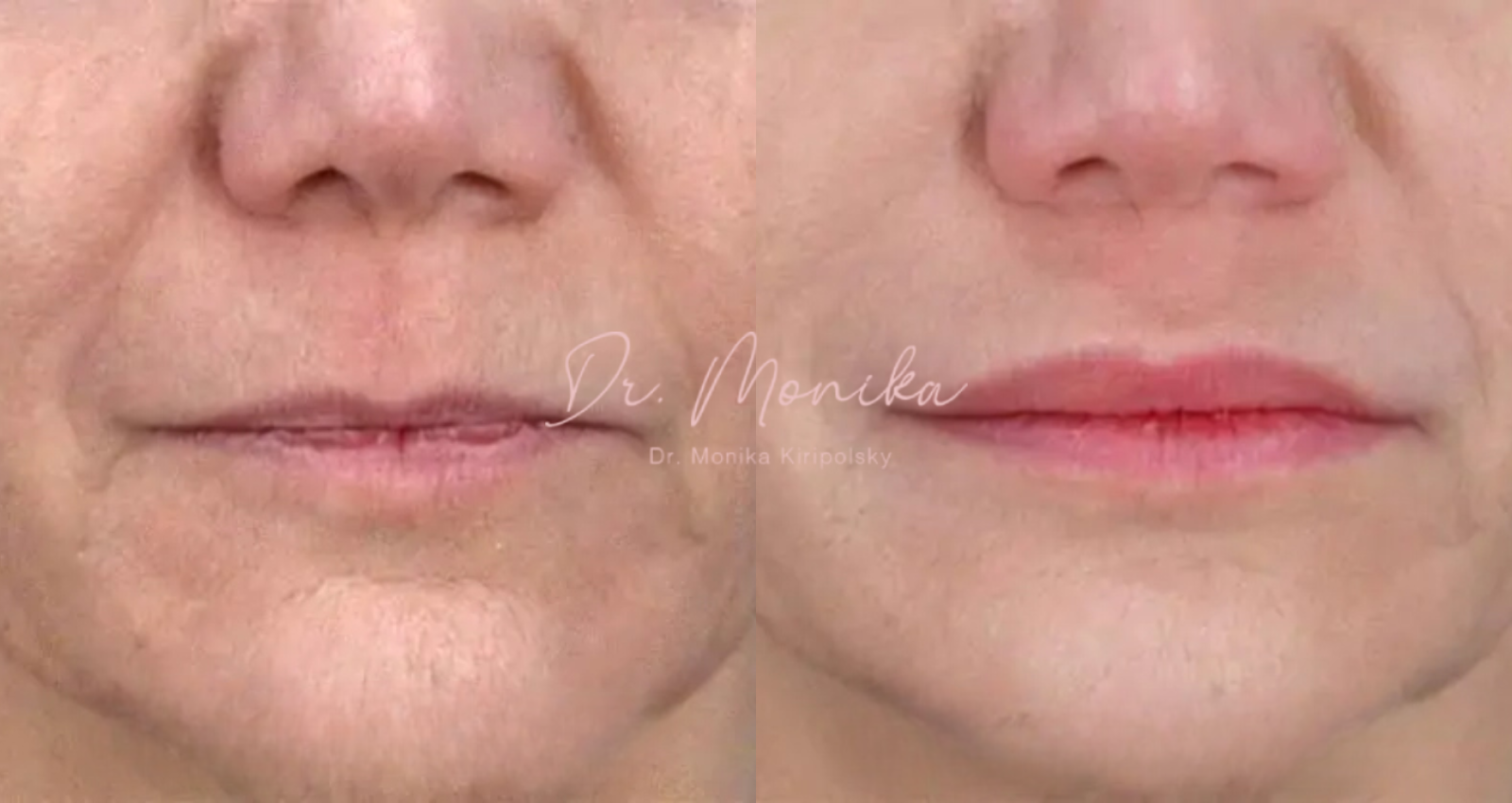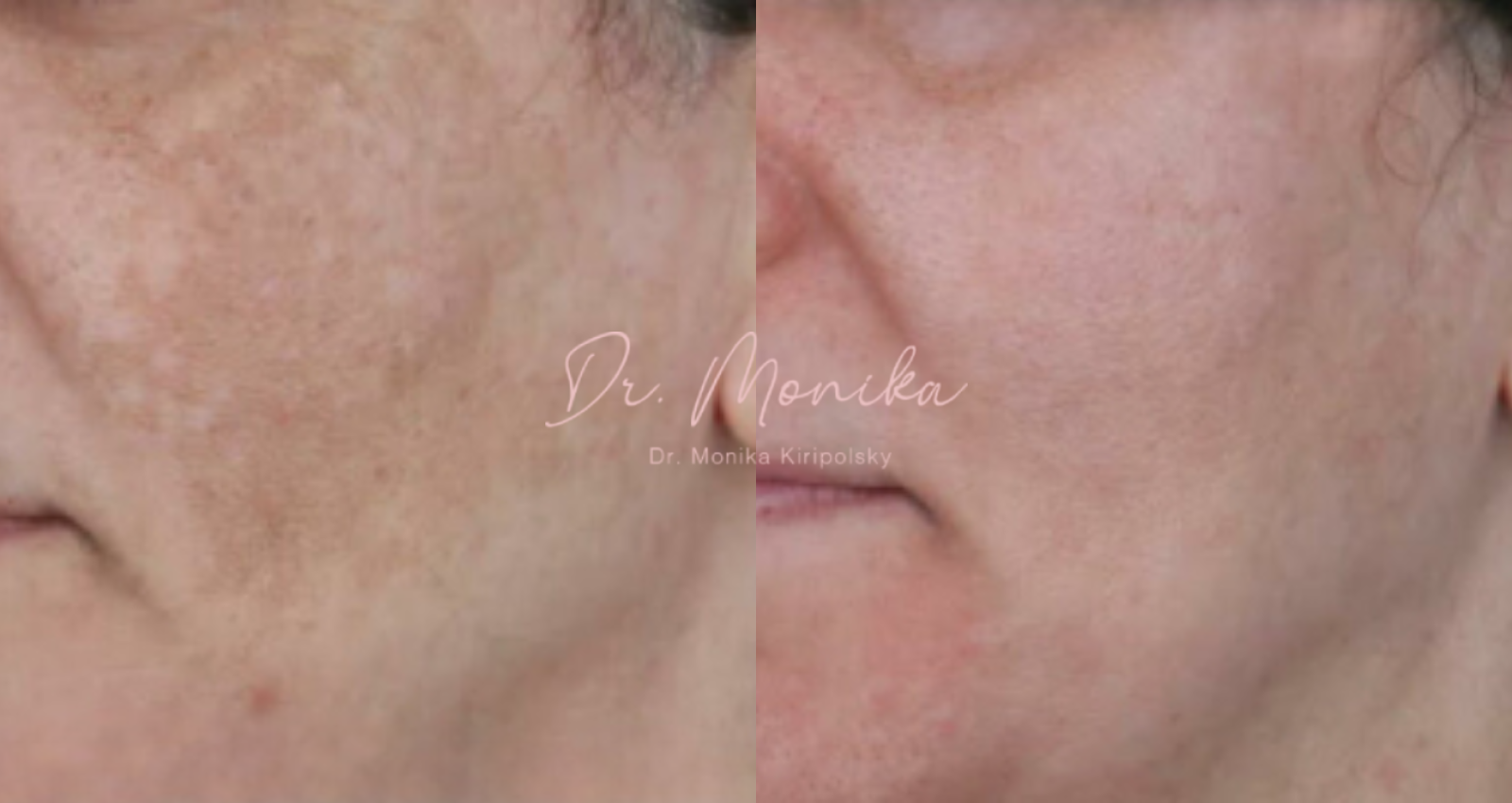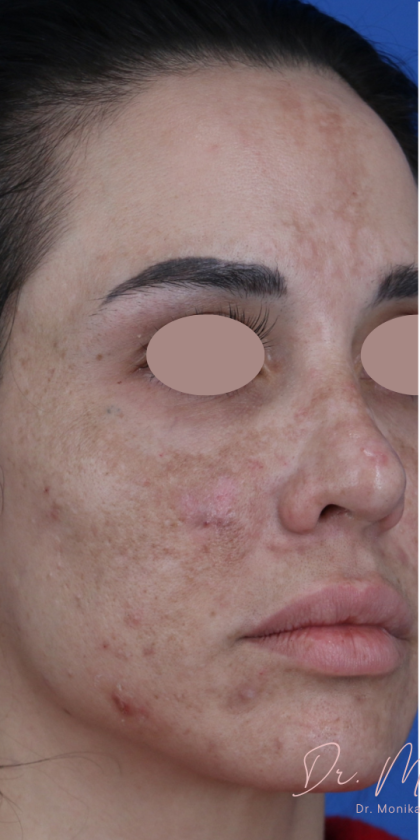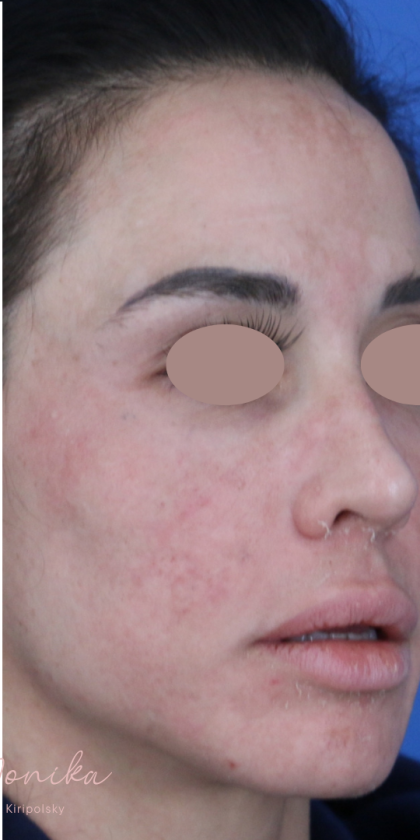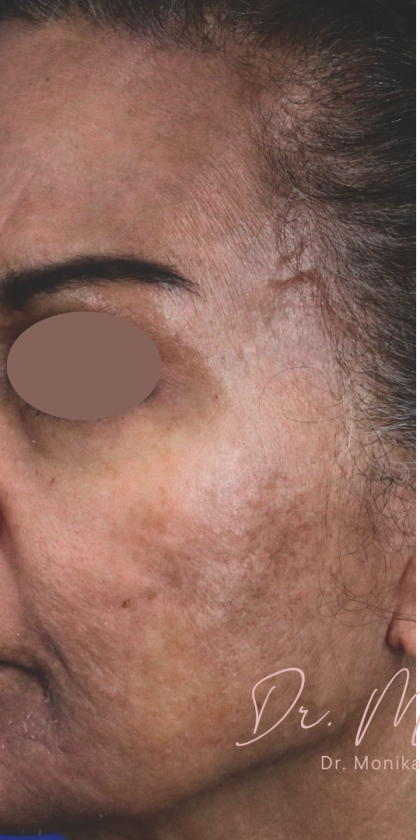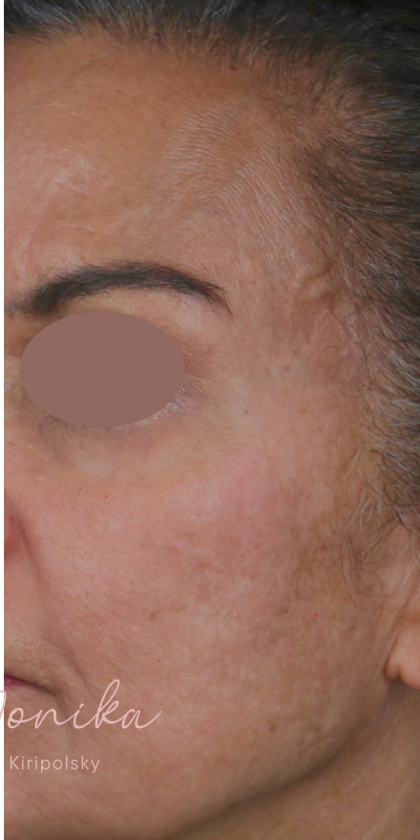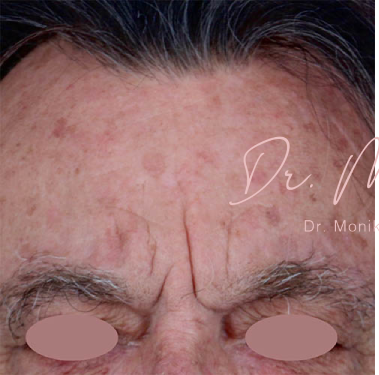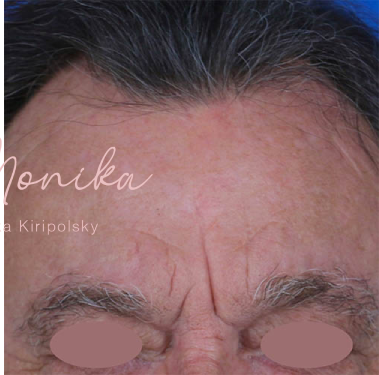Chemical Peels
Conveniently located to serve the areas of Beverly Hills, Newport Beach and Los Angeles, CA

A chemical peel is a popular and effective non-surgical cosmetic procedure that rejuvenates the skin by exfoliating the topmost layers and building collagen in the process. This treatment can address various skin concerns such as acne scars, hyperpigmentation, fine lines and wrinkles, sun damage, and uneven skin tone. Chemical peels restructure collagen and elastin in the skin, leading to improved skin texture, tone, and overall appearance. Moreover, chemical peel treatment plans can be custom-tailored to meet your specific skin needs.
Dr. Monika Kiripolsky is a board-certified dermatologist and fellowship-trained laser and cosmetic surgeon. At Dr. Kiripolsky’s practice, located in Beverly Hills, we offer advanced chemical peel treatments that can help you regain beautiful, blemish-free skin.
To learn more about chemical peels or schedule a personal consultation, call our office at (424) 652-6563 or contact us online for more information.
Contents
Before and After Photos
“Peeling is Healing”
Dermatologists often say that “peeling is healing.” This is because chemical peels exfoliate the skin and are used to treat multiple skin conditions including: (1)
- Acne
- Acne Scarring
- Hyperpigmentation
- Sun Spots
- Sun Damage
- Skin Laxity
- Fine Lines
- Wrinkles
- Precancerous Conditions
- Uneven Texture & Tone
- Melasma
Our dermatology cosmetic procedures can help your skin look more refreshed, clear, and youthful, as new skin bathed in fresh collagen and elastin develops, replacing older, damaged skin.
How Do Chemical Peels Work?
Dermatology procedures such as chemical peels work by loosening damaged skin cells, ultimately causing them to gently slough off. This controlled damage causes skin regeneration and remodeling with the increased production of collagen and elastin fibers. (2) Chemical peels differ based on how deeply they penetrate into the skin as well as by the type of chemical solution that is used. Factors affecting how deep a chemical peel penetrates include:
- The type(s) of acid used
- The percentage concentration of the acid
- The number of coats applied
Deeper chemical peels result in more dramatic improvement, yet can also be associated with greater risks. This underscores the importance of seeing a board-certified dermatologist for your chemical peel. Visit our dermatology office in Beverly Hills and see how a chemical peel can leave your skin looking smoother, tighter, more youthful, and refreshed.
Chemical Peel Depths
Dr. Kiripolsky performs a wide variety of chemical peels including glycolic acid, salicylic acid, lactic acid, phenol, Jessner’s solution, trichloroacetic acid, as well as personalized combinations of each. Chemical peels are classified as superficial, medium, and deep, based on their strength as well as how deep they penetrate the skin.
Superficial Peels
Also known as “lunchtime peels”, these superficial peels gently exfoliate the outermost layer of the skin, the epidermis. This type of peel uses mild acids such as alpha-hydroxy acids (AHAs) and beta-hydroxy acids (BHAs) to remove dead skin cells and stimulate collagen production. Our superficial 3-Step Peel increases cell turnover, reduces acne scarring, evens skin tone, builds collagen, and is an effective skin rejuvenation method for younger patients. We recommend a series of 3-5 treatments spaced about a month apart for the most effective results. Superficial chemical peels offer minimal downtime and are suitable for individuals with milder skin imperfections.
Medium Chemical Peels
Medium-depth chemical peels penetrate deeper into the skin, targeting the top layers of the skin as well as some of the underlying dermis. This type of peel usually utilizes a highly concentrated trichloroacetic acid (TCA) solution to remove damaged skin cells and stimulate collagen production. This is sometimes known as the “blue peel” because of the way that it temporarily changes the skin’s color to a slightly blue hue, before revealing the fresh, new skin beneath. Medium chemical peels effectively address moderate skin imperfections such as fine lines and wrinkles, skin laxity, and precancerous conditions and require a short period of downtime for recovery. Our TCA chemical peel is commonly paired with our CO2 resurfacing laser, creating a more dramatic result. Dr. Kiripolsky’s combination technique is the best procedure to rejuvenate the skin, address uneven skin texture and color, and treat fine lines and wrinkles.
Deep Chemical Peels: The Phenol Peel
Deep chemical peels are the most intensive type of peel and targets the reticular dermis. This peel uses phenol, a strong acid, to treat more severe skin imperfections. Dr. Kiripolsky uses this type of deep peel to treat deep wrinkles, sun damage, and deeper scars in specific areas of the face, such as around the mouth, rather than a full face peel. Local anesthesia with a nerve block will keep patients comfortable, forgoing the need for general anesthesia. Deep chemical peels require a longer and more intensive recovery period and must be performed under specialized supervision of a board-certified physician, but results can be dramatic.
What is a Blepharo Peel?
Phenol can be used in eyelid rejuvenation as a non-surgical alternative to blepharoplasty. This advanced peel requires no incisions or sutures and is specifically designed for the eyelids. As it tightens the skin in targeted areas, it heals and lifts, providing patients with rejuvenated eyes that are more alert and youthful-looking.
Who is a Candidate for Chemical Peels?
Ideal candidates for chemical peels are individuals who have specific skin concerns they wish to address. Candidates should be in good overall health, non-smokers, and have realistic expectations for the procedure’s outcomes. Age is not necessarily a limiting factor, as long as the individual is deemed healthy enough to undergo the treatment. During a personal consultation with Dr. Kiripolsky, she will perform a thorough evaluation of your skin condition and discuss your customized chemical peel with you.
Personal Consultation with Dr. Kiripolsky
To schedule your personal consultation to discuss which chemical peel is right for you, call (424) 652-6563 or fill out this form.
Preparation
Before your chemical peel procedure, Dr. Kiripolsky will provide you with detailed pre-procedure instructions to ensure your skin is ready for treatment. It is essential to follow these instructions diligently to ensure a smooth procedure and optimal results. Depending on your skin condition, she may advise that you create a pre-peel skin care regimen using medical-grade products, many of which can be found in our skincare store.
Chemical Peel Procedure
The specific steps of a chemical peel procedure vary depending on the type and depth of the peel being performed. Dr. Kiripolsky will explain the details of your treatment plan during your personal consultation. Generally, a chemical peel procedure follows these steps:
- Cleansing: Before the peel, the treatment area is thoroughly cleansed to remove any dirt, oil, or makeup.
- Application of Chemical Solution: The appropriate chemical solution is carefully applied to the skin using a brush or cotton pad. The solution may cause a tingling or stinging sensation, which indicates that it is working.
- Duration: The length of time the chemical solution remains on the skin depends on the specific peel being performed.
- Neutralization: Once the desired amount of exfoliation has been achieved, the chemical solution is neutralized with a neutralizing agent or water.
- Post-Treatment Care: Dr. Kiripolsky will provide specific instructions on how to care for your skin post-treatment, including the use of recommended skincare products and sun protection.
Recovery
The recovery period after a chemical peel depends on the depth of the peel performed. Here are the general guidelines:
- Superficial Peels: Patients undergoing superficial peels typically experience mild redness and peeling. These side effects usually resolve within one week, allowing patients to resume their regular activities immediately.
- Medium Peels: Medium-depth peels can cause more noticeable redness, peeling, and flaking of the skin. Recovery can take up to one week, during which time patients might prefer to limit public appearances.
- Deep Peels: Deep chemical peels require the longest recovery time, often taking up to two weeks for the skin to fully heal. Significant redness and swelling are expected, and discomfort can be controlled with prescription medication. Patients should plan for adequate social downtime during this period.
Medical-Grade Skin Care At Home
The golden rule for all chemical peel recovery is not to pick at or pull at the skin as it peels away. Dr. Kiripolsky will recommend specific products such as healing creams, ointments, and other topicals that can help you heal quickly and enhance your beautiful results. She will also tell you when to resume your normal skin care regimen. Depending on your treatment plan, Dr. Kiripolsky may inform you about our Triple Alpha-Hydroxy Smoothing Gel formulation to maintain your results.
Results
The results of a chemical peel become fully apparent once the skin has healed completely. Patients can expect smoother, more even-toned, and rejuvenated skin with improved texture and diminished imperfections. Collagen production stimulated by the chemical peel continues over time, leading to further improvements in skin quality. Your best results appear 3 months post procedure. To maintain optimal results, patients are advised to follow a customized, medical-grade skincare routine recommended by Dr. Kiripolsky and protect their skin from sun exposure.
How Much Do Chemical Peels Cost in Beverly Hills?
To learn more about how much chemical peels cost with Dr. Kiripolsky, call (424) 652-6563 or visit our contact page.
FAQ
Are chemical peels painful?
During the chemical peel procedure, patients may experience a mild tingling or stinging sensation. Topical numbing agents can be used to ensure comfort during the procedure. After the chemical peel, patients may experience some temporary discomfort, depending on the depth of the peel, which can be managed with over-the-counter pain medication.
Can a chemical peel treat melasma?
Depending on the specific nature of your condition, a specially-formulated combination peel can be custom-made for melasma.
Can I combine chemical peels with other treatments?
Yes, chemical peels can be combined with other non-surgical facial rejuvenation treatments to enhance overall results. Dr. Kiripolsky will evaluate your specific needs and recommend the best combination of treatments during your personal consultation.
How long do the results of a chemical peel last?
The longevity of results varies depending on factors such as the patient’s skincare routine, lifestyle habits, and the natural aging process. Generally, the results of a chemical peel can last several months to years, especially with proper sun protection and a customized, medical-grade skincare regimen.
References
- Soleymani T, Lanoue J, Rahman Z. A Practical Approach to Chemical Peels: A Review of Fundamentals and Step-by-step Algorithmic Protocol for Treatment. The Journal of clinical and aesthetic dermatology. 2018;11(8):21-28. https://www.ncbi.nlm.nih.gov/pmc/articles/PMC6122508/
- Samargandy S, Raggio BS. Skin Resurfacing Chemical Peels. PubMed. Published 2020. https://www.ncbi.nlm.nih.gov/books/NBK547752/

